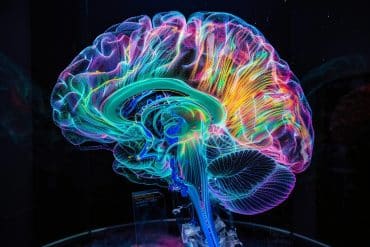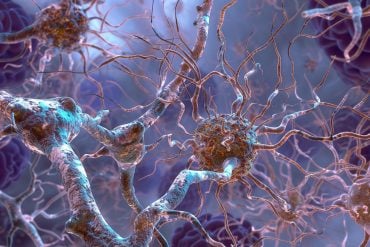Summary: Brinker-related transcription regulators play a key role in the formation of nociceptive sensation and could be a new target for pain-relieving medications.
Source: University of New England
Chronic pain is a debilitating condition affecting millions of people worldwide. An improved understanding of the pathophysiology of chronic pain is urgently needed.
A study by the Ganter Lab recently published in Molecular Pain, a peer-reviewed open access medical journal covering all aspects of research on pain, helped to fill that need.
The study, aimed at better understanding chronic pain, was funded by the National Institutes of Health and was conducted by Geoffrey Ganter, Ph.D., professor of Biology, and Ganter Lab members Aidan McParland, B.S. ’15 (Medical Biology and Oceanography), M.S. ’16 (Biological Sciences); Julie Moulton, M.S. ’20 (Biological Sciences); Courtney Brann, B.S. ’16 (Medical Biology), M.S. ’18 (Biological Sciences); Yvonne Otis, B.S. ’21 (Medical Biology); and Christine Hale, a Ph.D. student in the University of Maine Graduate School of Biomedical Sciences and Engineering.
When an injury occurs, the threshold for pain is reduced and an increased pain signal is produced. This process is called nociceptive sensitization. This sensitization enhances the recovery process and normally subsides after the injury is healed. However, dysregulation can occur which results in sensitization that persists after the injury has healed and is thought to perpetuate chronic pain.

Using a fruit fly as the organism under study, the paper describes progress the researchers have made in understanding how a biochemical chain of events helps the nociceptors, sensory neurons that alert the nervous system to potentially harmful stimuli such as mechanical pressure or noxious heat, to increase their sensitivity after injury.
Two components of this chain of events, called the Bone Morphogenetic Protein (BMP) pathway, act in the nucleus of the nociceptor to change the way this neuron expresses, or transcribes, its genes. Before an injury occurs, one component called Brinker appears to repress the expression of pain-promoting genes.
When Brinker is experimentally removed from the nociceptor, it becomes hypersensitive, even when there is no injury. On the other hand, another component called Schnurri appears to allow pain-promoting genes to be expressed. When Schnurri is experimentally removed from the nociceptor, it becomes unable to become hypersensitive after an injury.
These results indicate that Brinker-related transcription regulators play a crucial role in the formation of nociceptive sensitization and may therefore represent valuable new targets for pain-relieving medications. These data also reveal the potential for developing more targeted approaches to chronic pain management, including considerations for identifying populations at risk for the development of chronic pain states and the delivery of treatments that prevent the occurrence of this condition.
About this pain research news
Author: Press Office
Source: University of New England
Contact: Press Office – University of New England
Image: The image is in the public domain
Original Research: Closed access.
“The brinker repressor system regulates injury-induced nociceptive sensitization in Drosophila melanogaster” by Geoffrey Ganter et al. Molecular Pain
Abstract
The brinker repressor system regulates injury-induced nociceptive sensitization in Drosophila melanogaster
Chronic pain is a debilitating condition affecting millions of people worldwide, and an improved understanding of the pathophysiology of chronic pain is urgently needed. Nociceptors are the sensory neurons that alert the nervous system to potentially harmful stimuli such as mechanical pressure or noxious thermal temperature.
When an injury occurs, the nociceptive threshold for pain is reduced and an increased pain signal is produced. This process is called nociceptive sensitization. This sensitization normally subsides after the injury is healed. However, dysregulation can occur which results in sensitization that persists after the injury has healed. This process is thought to perpetuate chronic pain.
The Hedgehog (Hh) signaling pathway has been previously implicated in nociceptive sensitization in response to injury in Drosophila melanogaster. Downstream of Hh signaling, the Bone Morphogenetic Protein (BMP) pathway has also been shown to be necessary for this process.
Here, we describe a role for nuclear components of BMP’s signaling pathway in the formation of injury-induced nociceptive sensitization. Brinker (Brk), and Schnurri (Shn) were suppressed in nociceptors using an RNA-interference (RNAi) “knockdown” approach. Knockdown of Brk resulted in hypersensitivity in the absence of injury, indicating that it normally acts to suppress nociceptive sensitivity.
Animals in which transcriptional activator Shn was knocked down in nociceptors failed to develop normal allodynia after ultraviolet irradiation injury, indicating that Shn normally acts to promote hypersensitivity after injury.
These results indicate that Brk-related transcription regulators play a crucial role in the formation of nociceptive sensitization and may therefore represent valuable new targets for pain-relieving medications.







